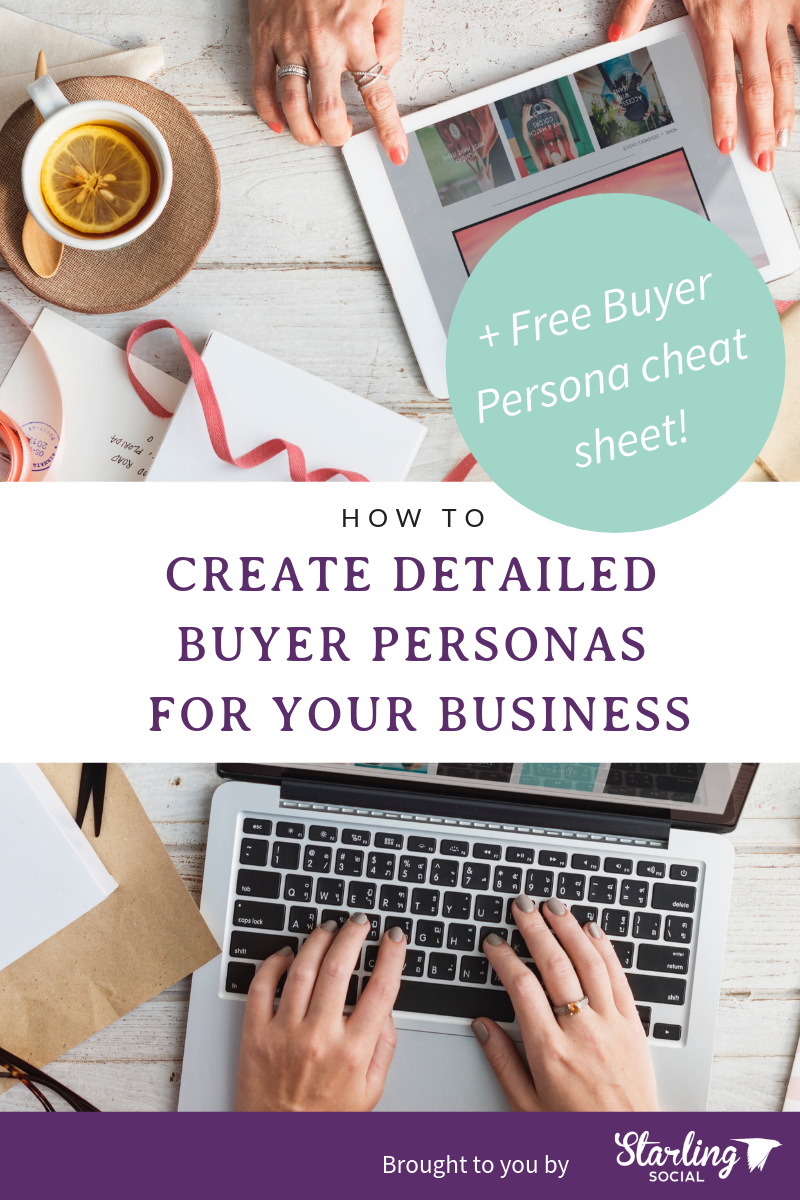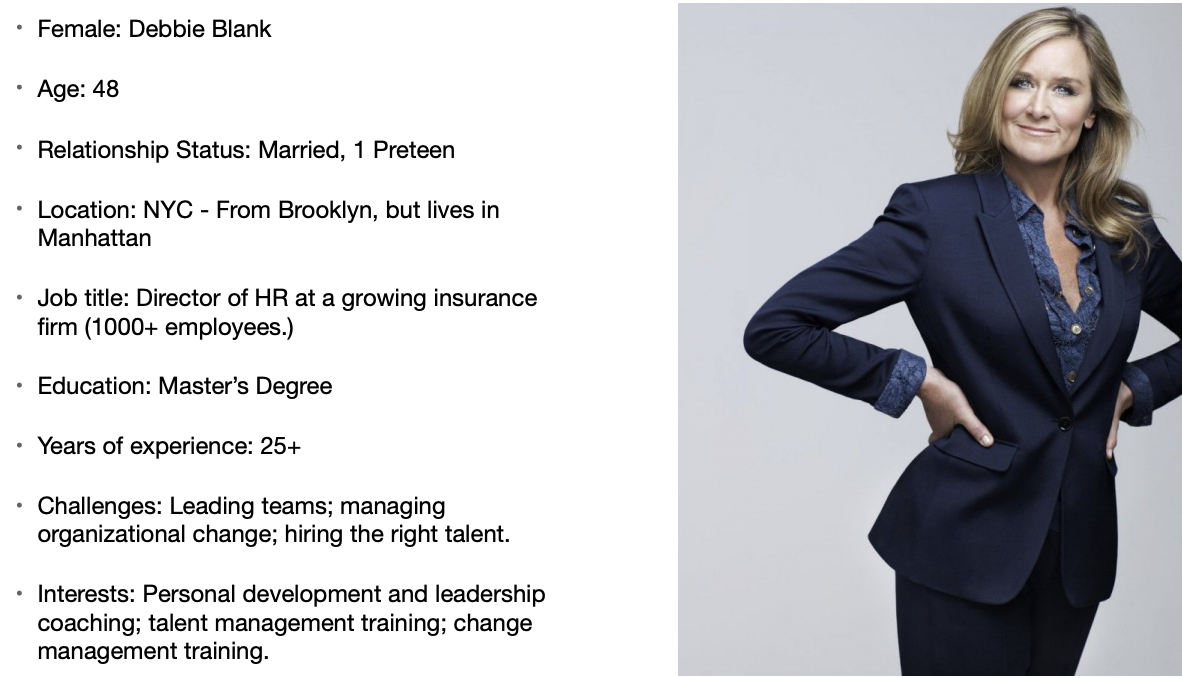How to Create Detailed Buyer Personas for Your Business + Free Buyer Persona Cheat Sheet
- by Alyson Shane
How well do you really know your customers?
Understanding who your customers are is critical to understanding how to sell your products to them. After all: if you don't understand your customers' motivations, backgrounds, goals, and challenges, you can't show them how your product or service solves their problems.
If you're not sure, ask yourself the following questions:
- Do I know what my customers' challenges are?
- What are their interests and needs?
- How old are they?
- How many years of education do they have?
- Where do they consume news and media?
These are just some of the questions you should be able to answer when it comes to your customers, and well-developed buyer personas are your key to gaining that knowledge.
In this post we'll explore buyer personas in detail, including:
- What are buyer personas?
- How to create buyer personas.
- Examples of buyer personas.
- Plus a FREE buyer persona cheat sheet!

What Are Buyer Personas?
A buyer persona is a semi-fictional representation of your ideal customer based on real and researched data about your existing customers.
Buyer personas are a way of organizing and making sense of customer data and demographics, including motivations, behavior patterns, pain points, goals, and more. By grouping people into persona types its easier for businesses to understand who is buying from them, and for sales and marketing teams to develop campaigns and strategies that showcase how a business' product or service solves their problems.
However: buyer personas aren't just for sales and marketing. These should be documents that your business refers to regularly, and which are used when developing every part of your sales and marketing funnel strategy.
The number of buyer personas you'll wind up developing depends largely on your business, but generally we find that our clients tend to have at least 6-8 buyer personas each.
What Are "Negative Personas"?
If buyer personas are representations of our ideal customers, then negative personas are the opposite: they're the representations of the people we don't want as customers. After all, not every lead is going to be the right fit for your business.
Not sure why you wouldn't want to target someone? Here's a list of a few reasons:
- They don't have the budget.
- They're too advanced for what you're selling.
- They're likely to have a high churn rate (they'll stop subscribing quickly).
- The cost of acquisition (how much you spent to acquire the lead) was too high.
- They're only engaging with your content for research or knowledge.
To identify and understand these groups of people, you need to create negative or exclusionary personas.
While it may seem counterproductive to spend time getting to know the people you don't want to sell to, understanding the people you don't want to target can saver your sales and marketing teams time and money in the long run.
Bonus: Interview Your Negative Personas
If you're not sure how to build negative buyer personas, start by interviewing a sample of customers who closed but had a low average sale price, or customers who had low customer satisfaction scores, as a low score may mean they weren't the right fit for your business.
How Can You Use Buyer Personas?
Buyer personas allow you to personalize and target your marketing copy based on different segments within your audience.
For example, instead of sending the same lead nurturing email to everyone in your database, you can segment your list based on buyer personas and tailor your messaging based on what you know about their different goals, motivations, and problems.
If you've taken the time to create negative personas, you'll have the advantage of being able to segment out the people you don't want to target (like friends who sign up for your newsletter, for example) which can help you earn a lower cost-per-lead and cost-per-customer in your sales.
Other ways you can use buyer personas in your marketing copy include:
- Blog content speaking to pain points felt by different buyer persona types.
- Gated Content targeted at specific buyer persona types.
- Targeted landing pages for different customer types.
- ...and more!
How Do You Create Buyer Personas?
Buyer personas are created by doing research, interviews, and surveys of your target audience, including your customers and prospects.
Below are a few ways to gather the information you'll need to develop your buyer personas:
Interview Customers
Conduct interviews with customers and potential customers to determine what they like about your product or service.
Ask questions about their job role, title, what a typical "day in the life" looks like (both in and outside of work), the tools they use to do their job, what their challenges are, how they acquire new information and news, etc.
Optimize Your Forms
When creating forms to use on your website, use form field to capture the important buyer persona details you need.
For example, if your buyer personas vary based on company size, include a question in a form asking prospects how many people work at their company.
Ask Your Sales Team
One of the easiest ways to build buyer personas is to talk to your sales reps and ask them about the demographics of the people they interact with day-to-day.
If you don't have a dedicated sales team, take a look at the customers or clients your business has acquired to date and see what kinds of generalizations and conclusions you can make about them.
Ask yourself: who are the people buying your products and services? How long is your sales cycle? What are some of the objections they may have before buying?
All these questions, and more, can go a long way to developing useful buyer personas.
Bonus: Start With One and Build Out
It's normal for businesses to have multiple buyer persona types, and to have several for customers in the same industry or similar purchasing positions.
Once you start to analyze the data based on your successful customers, you'll start to see where one persona ends and where another begins. This is normal: as you iterate on your personas it's normal (good, even) for more persona types to emerge.
But be careful: if you don't have enough information to completely fill a buyer persona, remove it. In fact, don't be afraid to add and remove buyer personas over time as you learn more about your target customers.
Are you ready to start creating buyer personas for your business? Click here to download your FREE buyer persona cheat sheet to get started.
Buyer Persona Examples
Use these templates below to make the process of building your buyer personas as simple and streamlined as possible:
Let's start out by looking at a quick example of a buyer persona:

Debbie Blank is a manager in a large insurance firm, and is looking for products and services that can help her with her recruiting, onboarding, and being an effective manager. As someone interested in change management training, she's a forward-thinking manager in her industry. As the Director of HR she likely has at least some degree of purchasing power within the organization.
Do you see how much information we can pull from this super-simple buyer persona?
That's the power of buyer personas: the more time we spend developing them, and the more granular we get with our data, the more vividly we can paint a portrait of our ideal customers.
Background
The first section of your buyer persona should be dedicated to your persona's demographics, background, and key identifiers like communication preferences, education, and responsibilities.
Some examples include:
- Industry
- Company size
- Job title
- Age
- Income (personal)
- Responsibilities
Situation
We want to use our buyer personas understand the situations that make customers want to buy our products or services.
This means you'll want to know the following about each buyer persona type:
- Priorities
- Recent changes
- Pain points
- Motivations
- Goals
Habits
Habits refers to the information we can learn about our buyer persona types that relates to their personal habits and behaviors. Understanding who our buyers are as people (not just as consumers) helps us understand their buying patterns and how far along they may be in our sales funnel.
Some of the things we'll want to know include:
- Media consumption
- Likes / dislikes
- Research methods
- Trusted sources
Decision
Most purchases don't happen in a vacuum. In fact, within a business most purchasing decisions are only made after a the product or service has been pitched and reviewed, a budget is approved, and key stakeholders or decision makers have been involved and granted approval.
Understanding these areas of your buyer persona's life will help you identify potential objections to the sale, which you can address in your sales and marketing copy.
Some things to include are:
- Who they report to
- Budget
- Buying power
- Key stakeholders
Build Your Buyer Personas Today
Investing the time to create complete, detailed buyer personas isn't just about marketing to them; it's also about developing a deep understanding of your ideal customer, and how you can keep building a business that continues to solve their problems.
Get started by downloading our free buyer persona cheat sheet now.
Are you struggling to build a digital marketing plan that gets results? Drop us a line.

